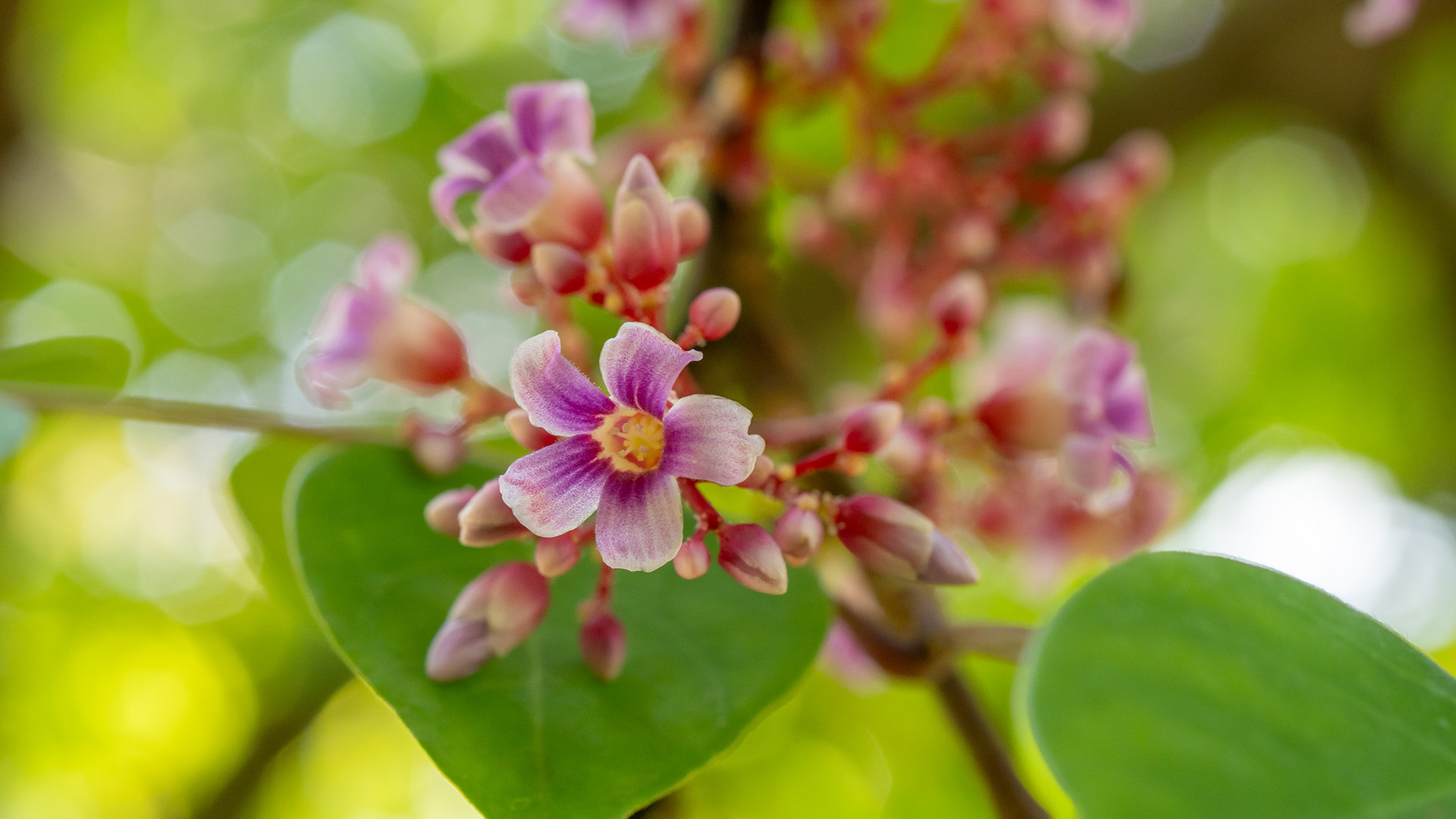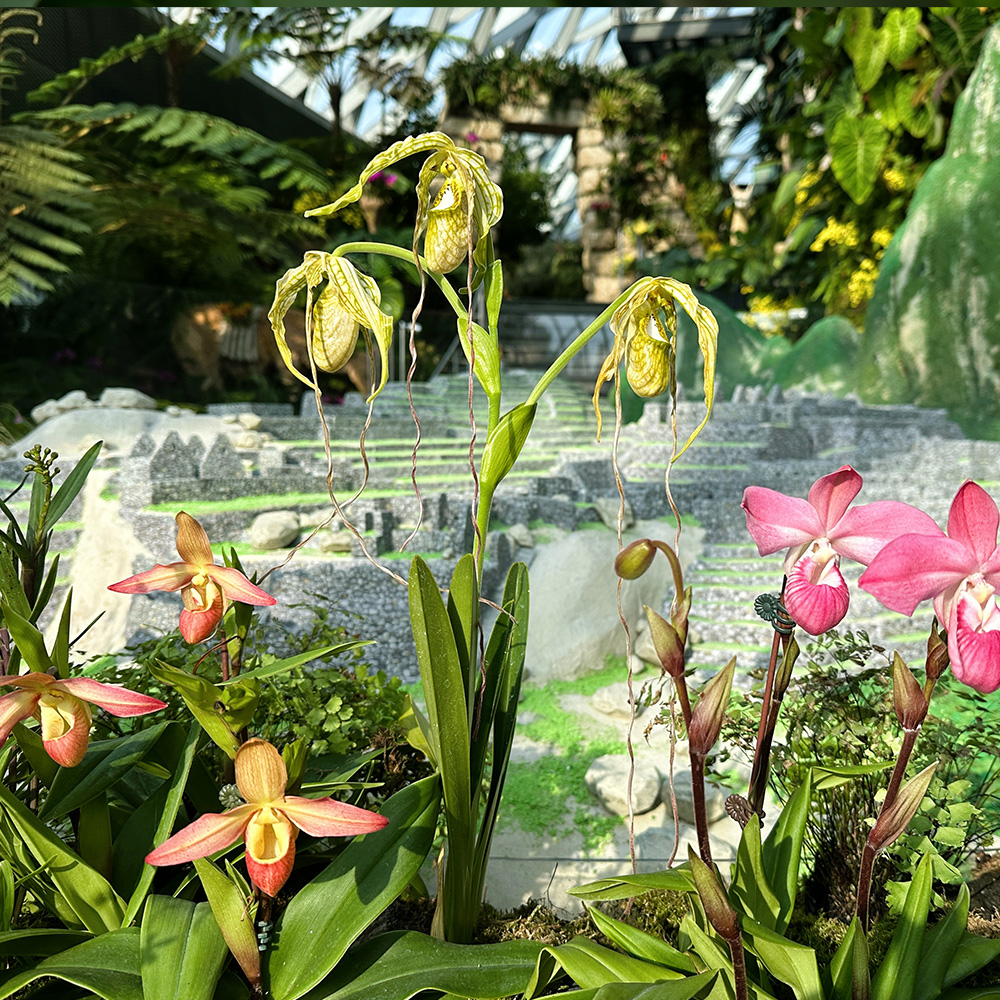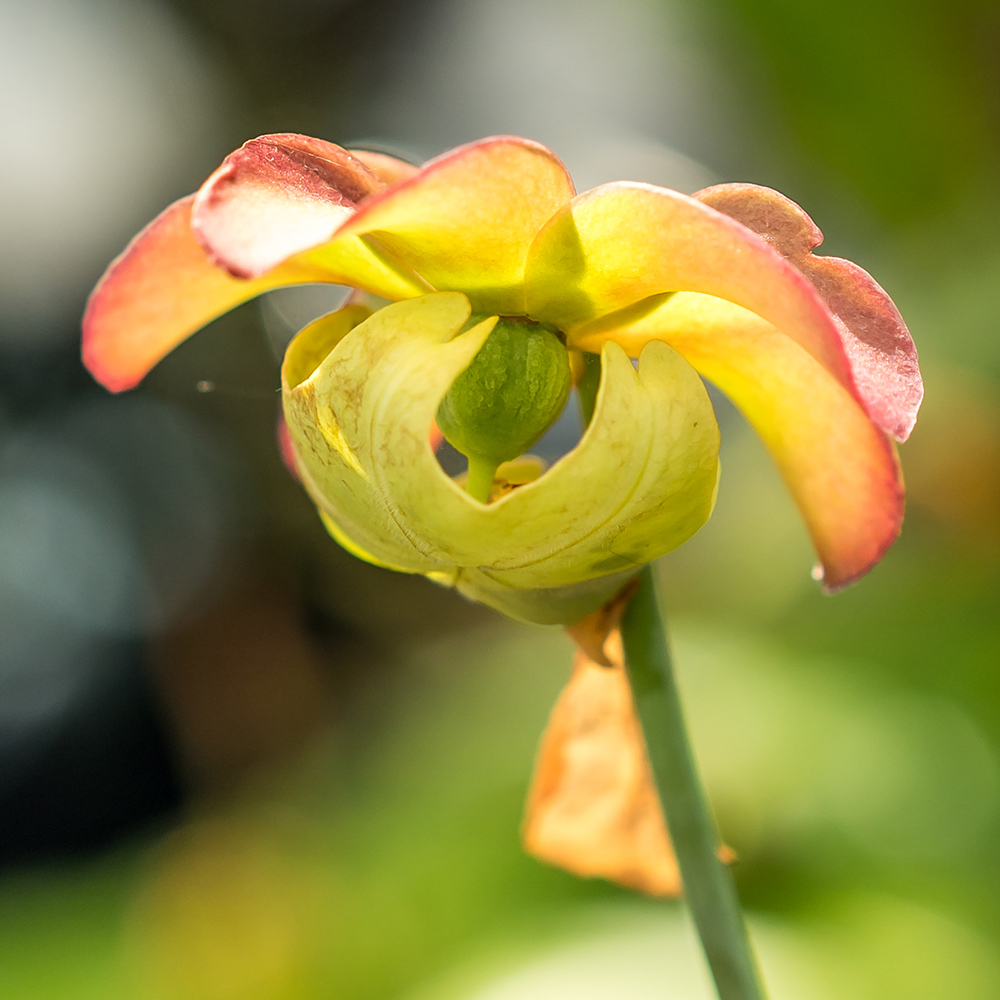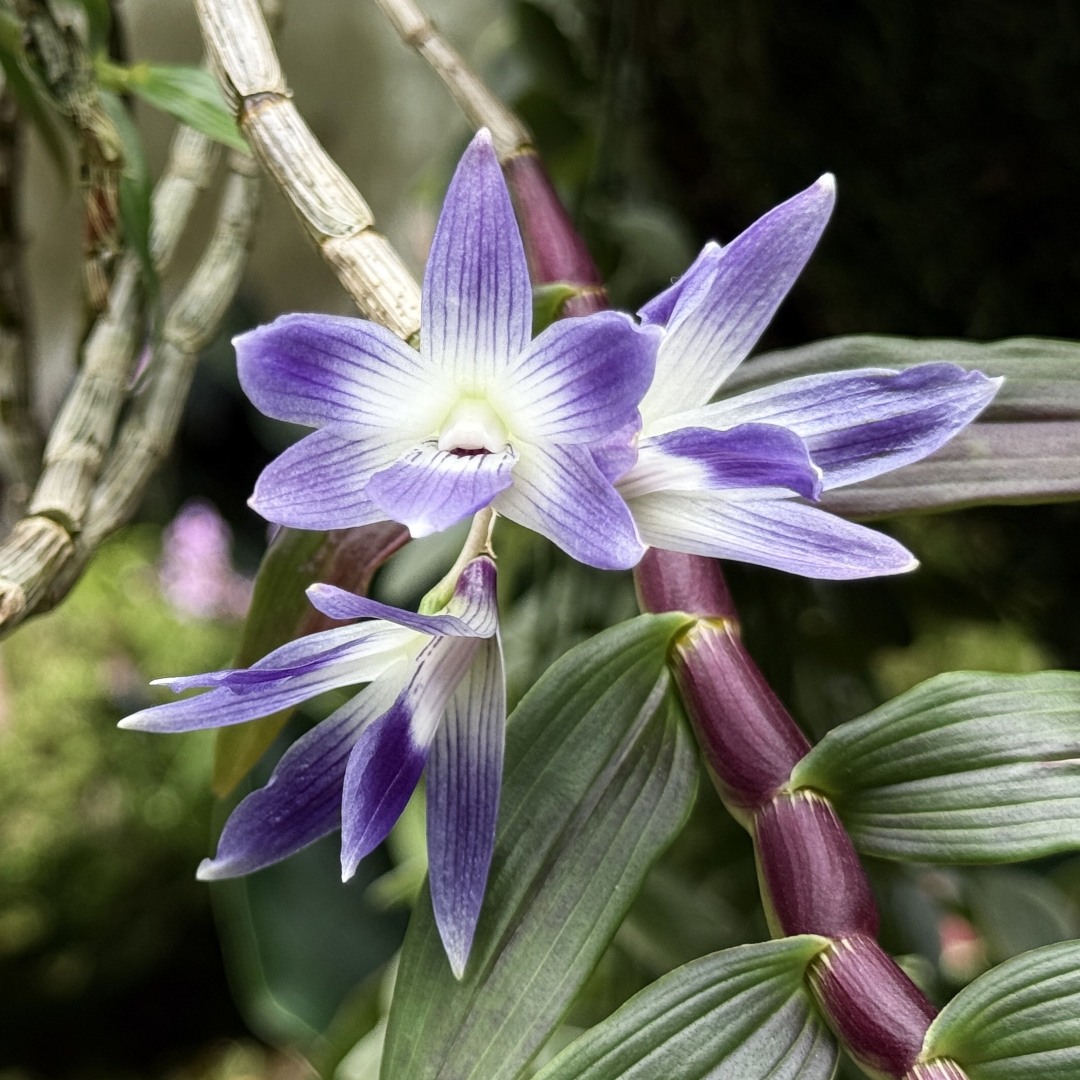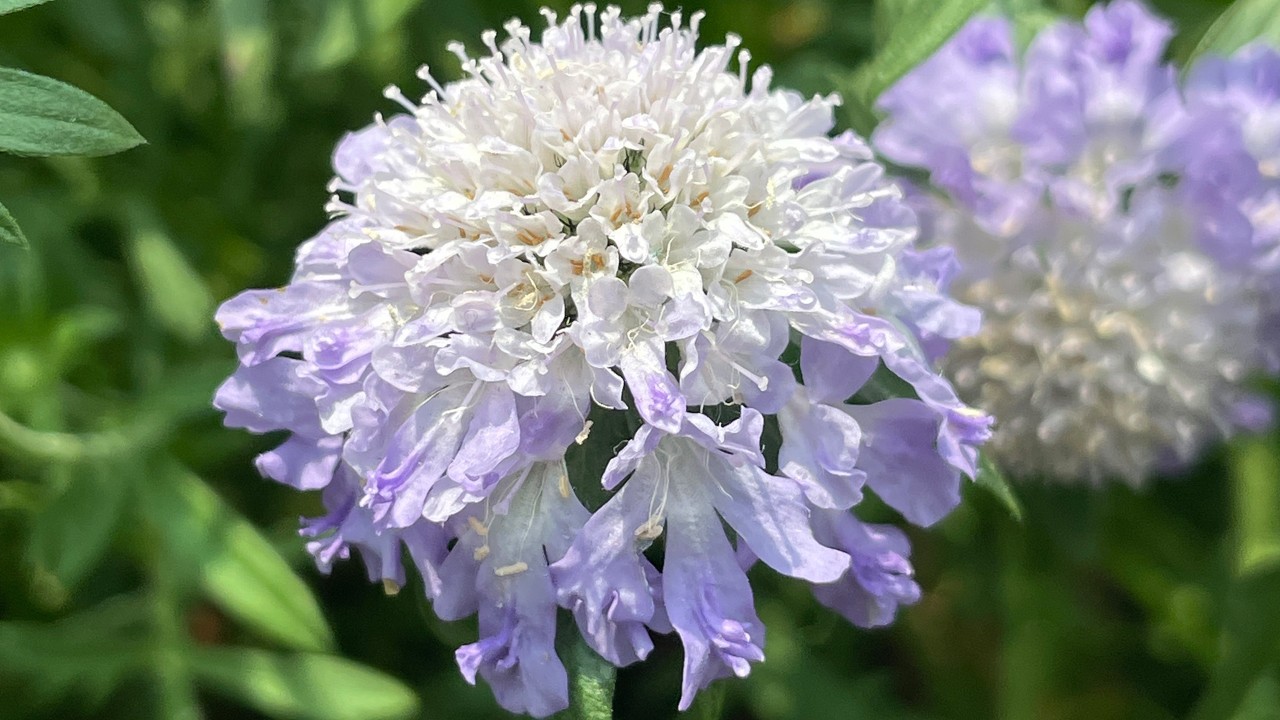
This year’s Chrysanthemum Charm display features several plants from the aster family (Asteraceae), including chrysanthemums (Chrysanthemum cultivars), sunflowers (Helianthus spp. and hybrids), asters (Aster spp. and hybrids, and coneflowers (Echinacea spp. and hybrids). These all have the familiar daisy-like floral structure: an outer ring of ray florets, each with a large, petal-like projection, surrounding the central head of tiny disc florets, or sometimes composed entirely of ray florets.
While the pincushion flower (Scabiosa spp. and cultivars) may look very similar to an aster or daisy and is also a flower head composed of dozens of tiny flowers called florets, pincushion flowers belong to a completely different family: the honeysuckle family (Caprifoliaceae)! Unlike the aster family’s ray florets which usually have a long, undivided, petal-like ray, the corolla (fused petals) of Scabiosa’s outer ring or marginal florets have five lobes: three large, expanded ones and two smaller lobes sometimes fused into one, giving the flower head a haloed look, as the central florets all have much smaller tubular corollas. Scabiosa species most often bear flowers in shades of light purple, pink, white, and rarely yellow, but cultivars with burgundy, dark red, and an almost black purple colour have also been bred!
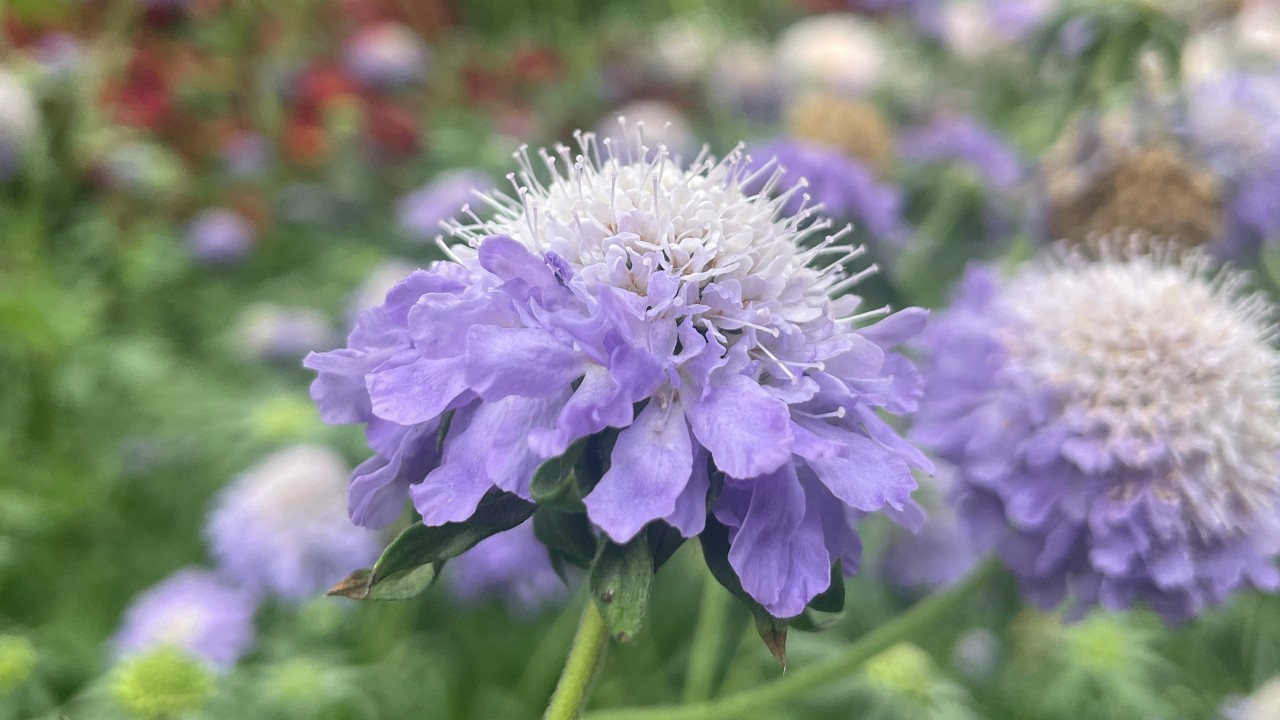 Rising above each floret is a slender style topped with a flat, disc-shaped stigma, together making the entire flower head look like a heavily laden pincushion. Can you spot the differences between the large marginal florets and the smaller central florets?
Rising above each floret is a slender style topped with a flat, disc-shaped stigma, together making the entire flower head look like a heavily laden pincushion. Can you spot the differences between the large marginal florets and the smaller central florets?
All ~60 Scabiosa species are biennial to perennial herbaceous plants, though they are often grown horticulturally as annuals. Most have a basal rosette of leaves from which come many opposite-leafed stems which eventually bear flower heads. Interestingly enough, while all Scabiosa species are adapted to montane or dry habitats, they have a huge natural range, with three distinct groups of species, one across the Mediterranean Basin and Europe, one in southern and eastern Africa, and the third in East Asia.
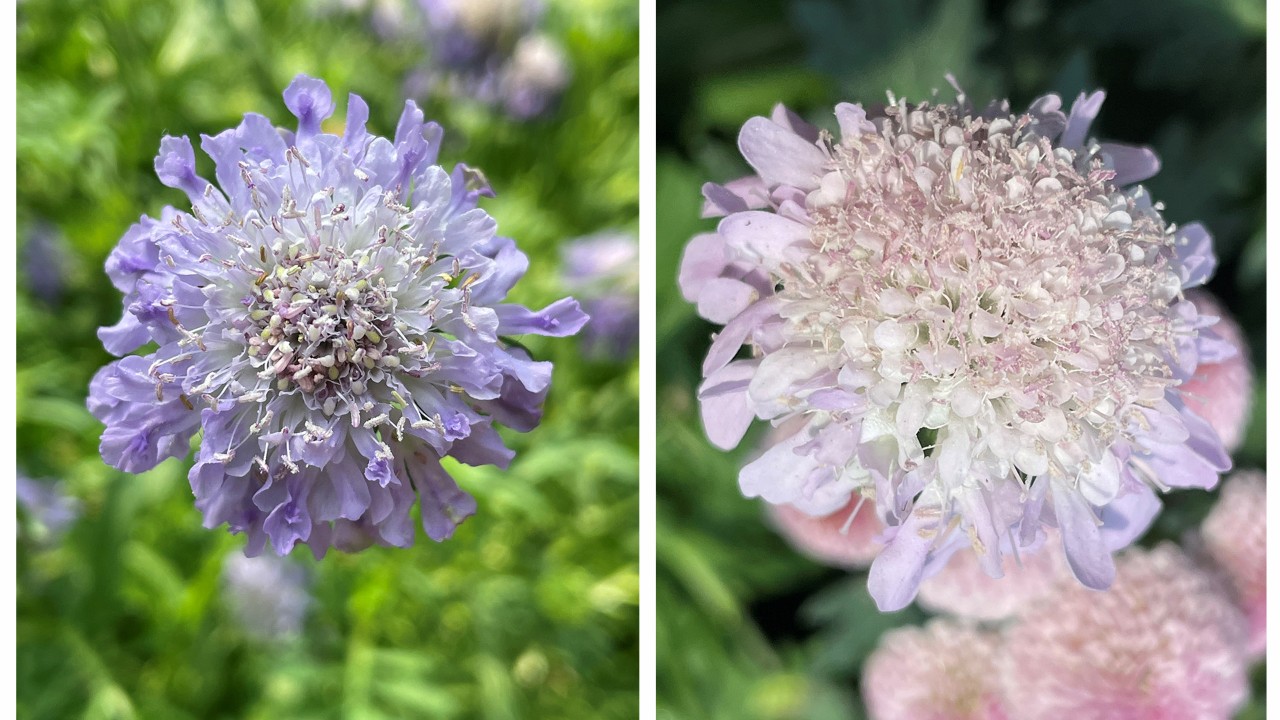 The 2023 Chrysanthemum Charm display features two species of Scabiosa. S. columbaria is native to Europe to Iran, the Arabian Peninsula, and northwestern Africa, while S. japonica is native to southern and central Japan. Shown are S. columbaria ‘Blue Note’ (left) and S. japonica ‘Pink Diamonds’ (right).
The 2023 Chrysanthemum Charm display features two species of Scabiosa. S. columbaria is native to Europe to Iran, the Arabian Peninsula, and northwestern Africa, while S. japonica is native to southern and central Japan. Shown are S. columbaria ‘Blue Note’ (left) and S. japonica ‘Pink Diamonds’ (right).
Yet another species of Scabiosa, S. comosa is a purple-blue wildflower native from South Siberia to Mongolia and across north, east, and central China to Korea. Known in Mongolia as ber tseseg, this species of Scabiosa flowers for three months of the year across the steppes and forest steppes of northern Mongolia. Used in traditional medicines to treat liver problems, modern medicine has recently confirmed the utility of S. comosa inflorescence extract in treating liver fibrosis.
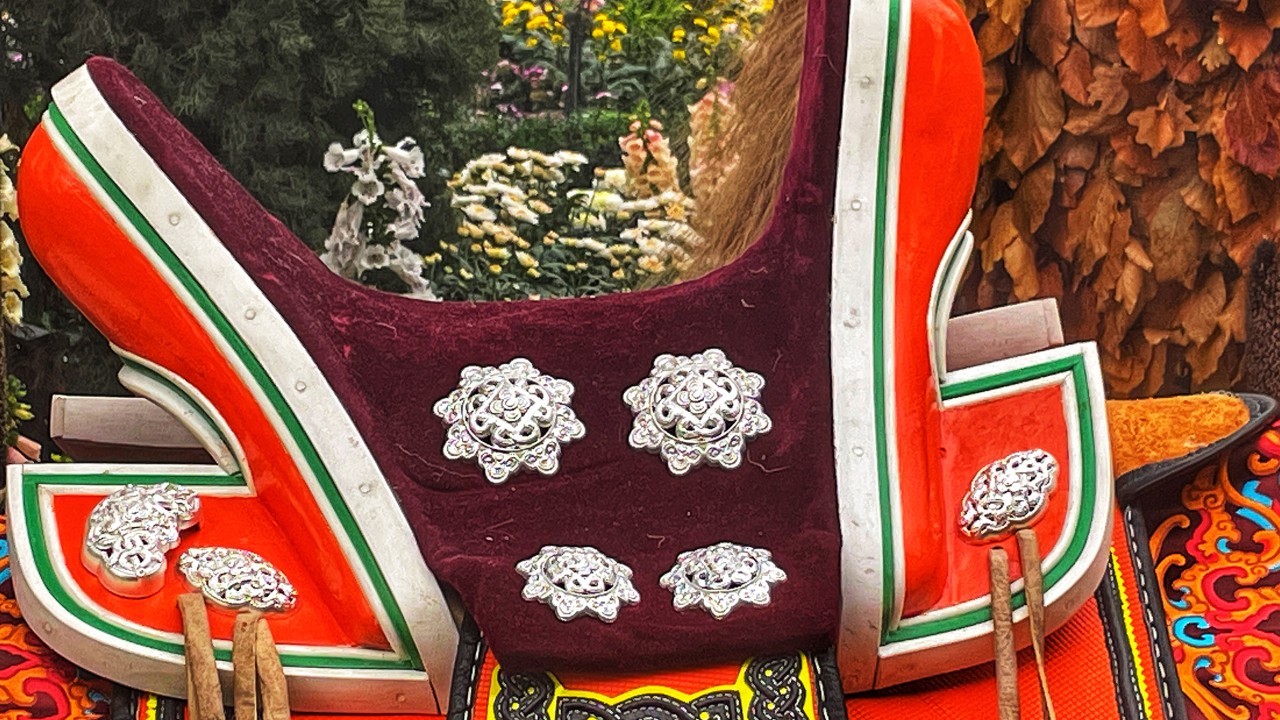 A symbol of tolerance and peace, the ber tseseg (S. comosa) was named as Mongolia.’s national flower in 2014. The ber tsetseg motif can be found as silver saddle plates which hold the cushion of a Mongolian saddle to its frame.
A symbol of tolerance and peace, the ber tseseg (S. comosa) was named as Mongolia.’s national flower in 2014. The ber tsetseg motif can be found as silver saddle plates which hold the cushion of a Mongolian saddle to its frame.
Visit the Chrysanthemum Charm floral display in Flower Dome through 13 November, 2023, and see if you can spot both S. columbaria ‘Blue Note’ and S. japonica ‘Pink Diamonds’, as well as the ber tseseg saddle ornaments on the traditional, handcrafted Mongolian saddle.
Written by: Janelle Jung, Senior Researcher (Research and Horticulture)
A transplanted pake (Hawai'i-born Chinese), she's finding her own Singaporean roots. Every plant has a story, and Janelle helps discover and share these with colleagues and guests, hoping to spark a mutual plant passion! Ask her what plant she named her cat after!
